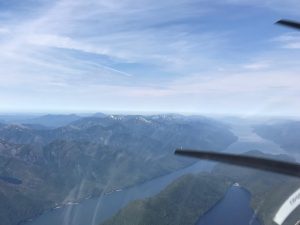This afternoon I participated in a panel on research collaboration between universities and First Nations communities. The panel was part of a two day research workshop hosted by UBC’s Indigenous / Science research cluster at the Musqueam Cultural Pavilion.
What follows are my speaking notes.
A few years ago there was a young student who wanted to study Indigenous Archaeology. He came up to me and asked if he could join in on my community’s project.
I felt worried though. Was what we were doing really archaeology?
How was what we were doing was Indigenous?
We were using our Nation’s commercial seine boat to travel through our territories, stopping at old villages, harvesting places, fishing sites, old trails, boat launches, all these social spaces that have names and histories.
At each place, once we had dropped anchor, we would go set a couple of crab traps. Sometimes we would jig a few fish, pick some seaweed and other shellfish.
Oh. We also did some percussion coring and some auger tests. Occasionally we had folks on board who could operate a 3d surveying tool and we mapped these places. Once and awhile we even dug a small hole or two. –One of the most interesting such holes was a shallow trench across a small island that revealed an old campfire, flint stones, and other evidence of European and Gitxaala use.
But I was left wondering whether the student would be cheated since we really weren’t doing archaeology. It was as though we were just out fishing. The crew consisted of an uncle a couple of nephews, a close friend and then some university colleagues and students. What we were doing struck me more like the way we go on a fishing trip; I guess that’s what made our archaeology Indigenous.
This gets at a perspective on collaboration that is rather different than most of these projects that originated from non-Indigenous researchers approaching a First Nation community. As an Indigenous researcher at a university my relations are the same yet different than my non-Indigenous colleagues. As our youth gain greater access to post-secondary education there will be more researchers like me and more projects wherein the researcher is of the community.
The medium term goals of project such as this Research Cluster is to make the non-Indigenous researcher dispensable, not indispensable.
Our Gitxaała/UBC collaborative program began more than two decades ago. Our first projects were in collaboration with the former treaty office. Then, working with band administration, an environmental monitoring agency was set up to regulate research access and external referrals. The objective was to shift the control away from outside forces and bring it under community leadership and control.
This isn’t a call for researchers to mute their voices. It is recognition that research needs to be controlled and regulated locally. It is also a call for a return to rigorous and precise work that doesn’t make over claims or unfounded assertions in any paper of the academic product.
This research cluster can make a difference. What will be important is for the coordinators to clearly identify what they want to do, what their capacities might be, and then allow us to decide if we want to engage.


